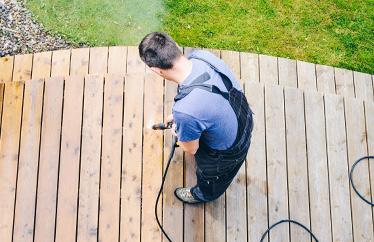Spring is finally here which also means the beginning of tornado season. Below, we go over tips to help you prepare for tornado season this year.
Search and inspect
First things first, plan on inspecting your home from the tippy top to the very lowest point. Bring a tape measure, notepad or open the notes app on your phone and prepare to take notes, measurements and pictures. As an insurance professional would, doing a thorough inspection is your best bet to prioritize and strategize which projects are most important in tandem with which tasks can be completed by you and which need to be handled by a professional.
Preparation is Key
Whether you live in ‘Tornado Alley’ or not, now is the time to start prepping your home for possible tornado weather because tornadoes have a habit of randomly showing up in places they have never been experienced before. Sometimes, people may have a few days’ advanced warning before a strong storm front hits but it is also common to be completely caught off guard with a dangerous weather situation. Take the time to prepare now so you are ready in almost any scenario.


Know what you have
If the idea of creating an inventory of all the contents in your home makes you want to run for the hills, don’t tie up your laces just yet. While you do need to gather a lot of information for a home inventory, the process isn’t as tedious as you might think. In fact, you can even take a video of your home or provide pictures for proof of what you own.
Make a kit
Everyone across the country should include severe storm preparedness in their emergency plans, and the first step is assembling an Emergency Readiness Kit.
Below you can view and/or download a full list of what we recommend you include in your basic Tornado Storm Readiness Kit.

Plan and then practice
One thing that may help you keep your home and family safe during emergencies is to rehearse the emergency situation. Practice not only helps people understand the plan, but it will also allow you to troubleshoot unanticipated issues in a safe environment. Once you have decided on a plan, do a dry run and adjust your strategy based on what you’ve learned. Make sure to rehearse different scenarios like "are the kids at school?", "middle of the night" and "can't find the cat!" Then sit back together to evaluate your planning process. Readjust your plan to fit the household's needs and scenarios until everyone feels confident in the plan.
Check your policy as a policy
Check your insurance policies in advance of any severe weather, so you know what is and isn't covered. It's possible you may not have enough protection to cover all of your losses – especially if there is extensive damage done from an act of God. Consider extra coverage or adding certain riders to your policy so you are fully protected from the damage a tornado could do to your home. Explore resources provided by the Federal Emergency Management Agency (FEMA) like the Flood Map Service Center that allows you to search your specific address to let you know if you may need additional coverage.
You can also contact a home expert when you sign up for Hippo Home Assist if you need advice preparing your home before a storm






